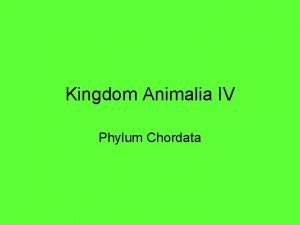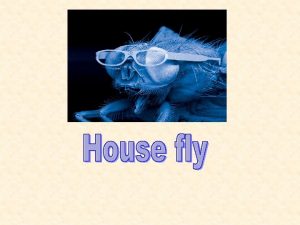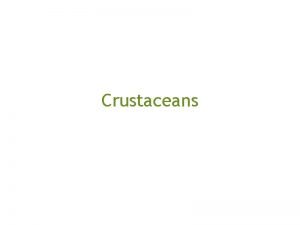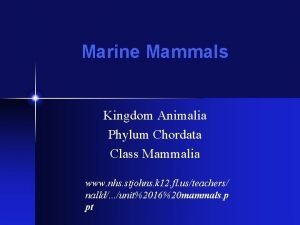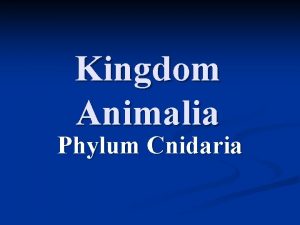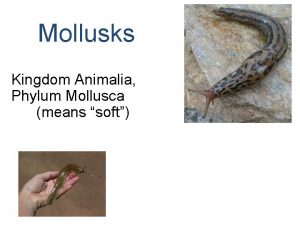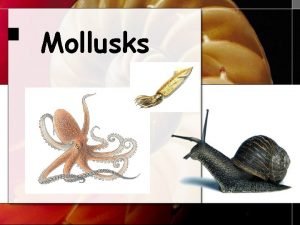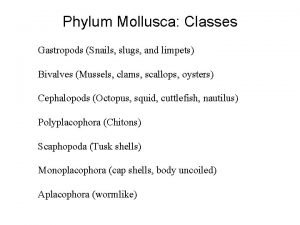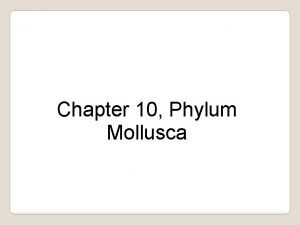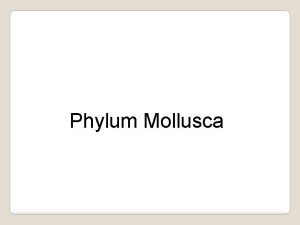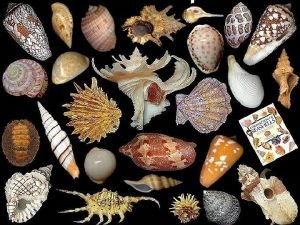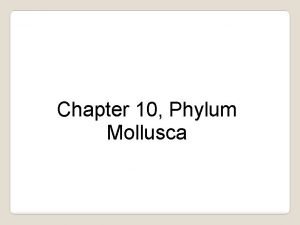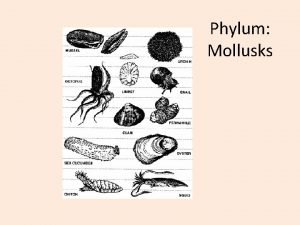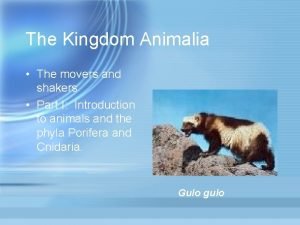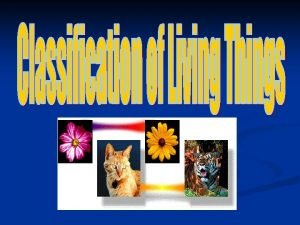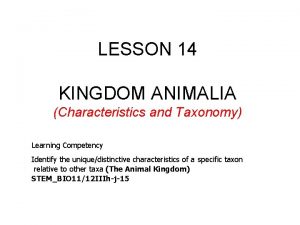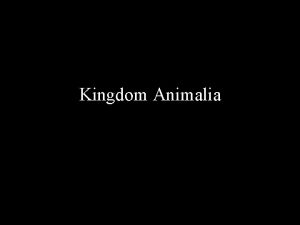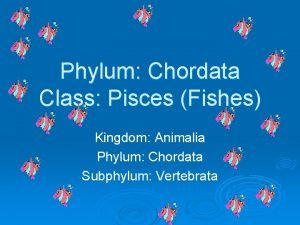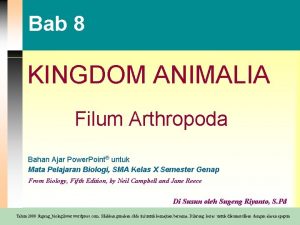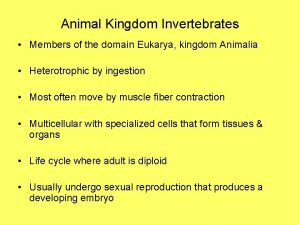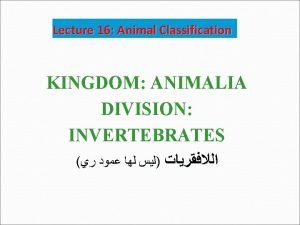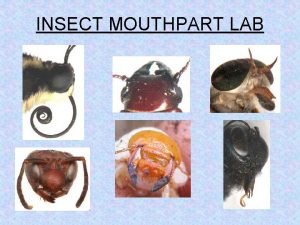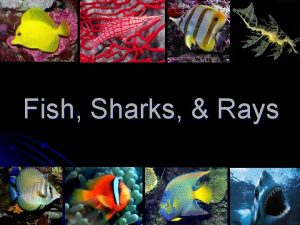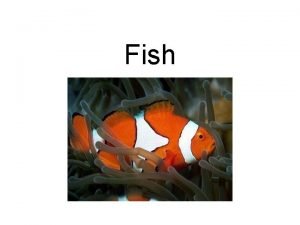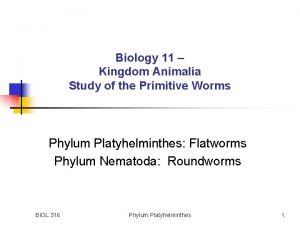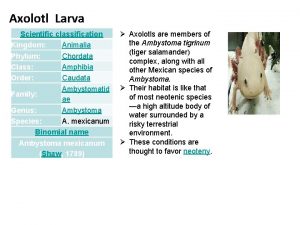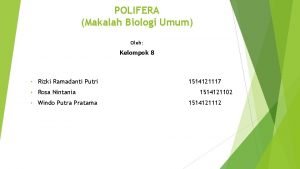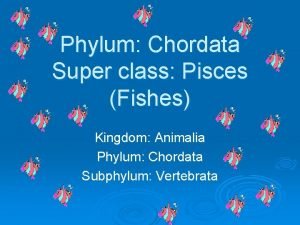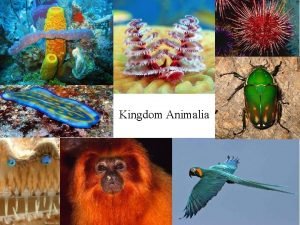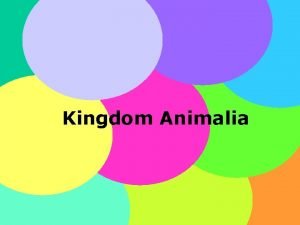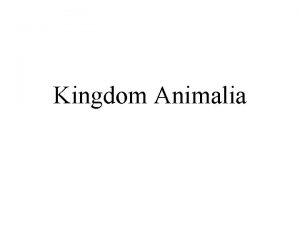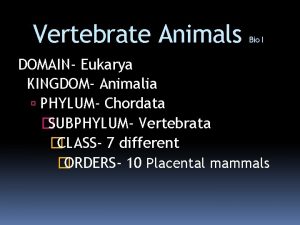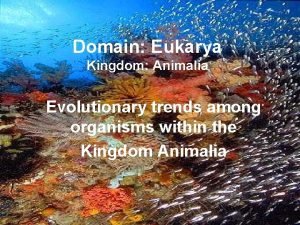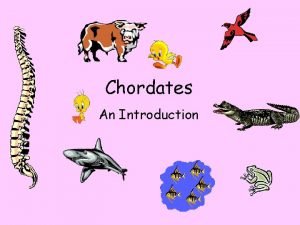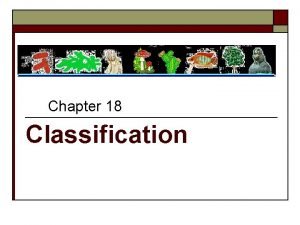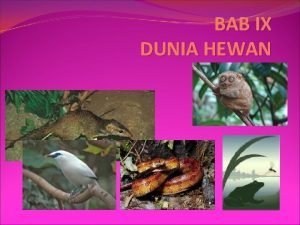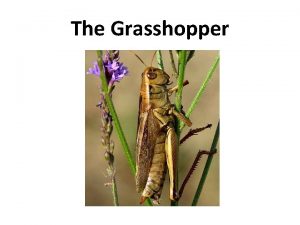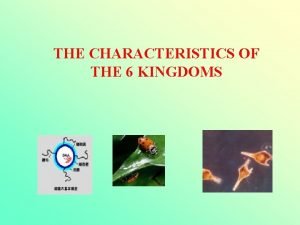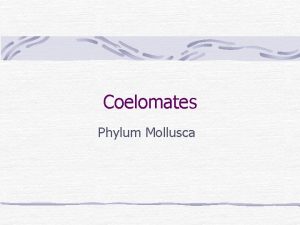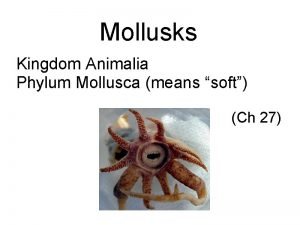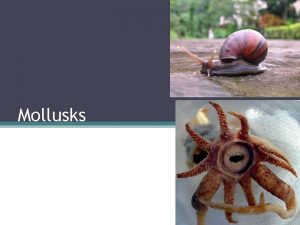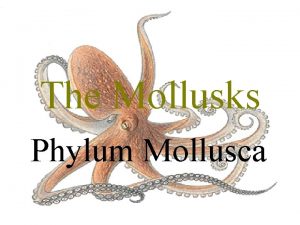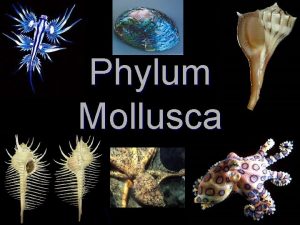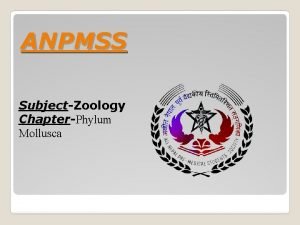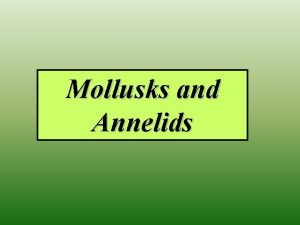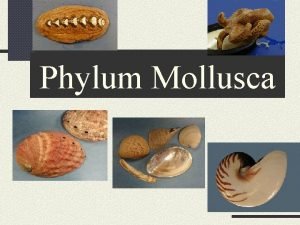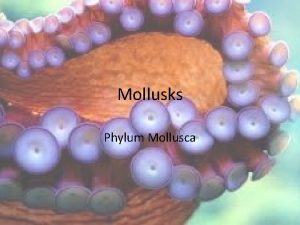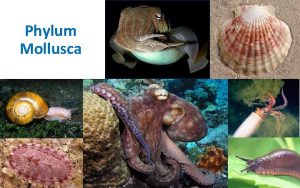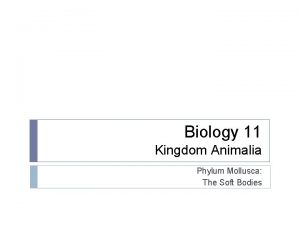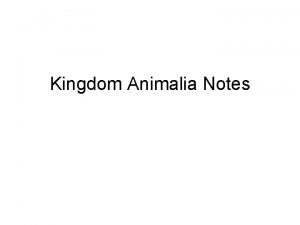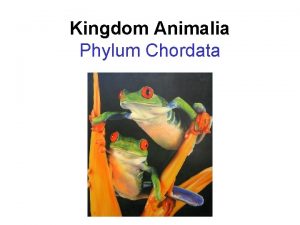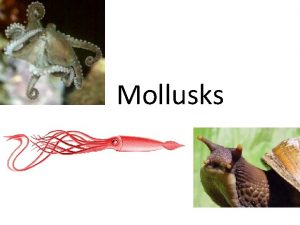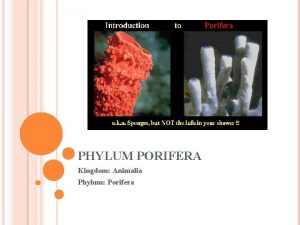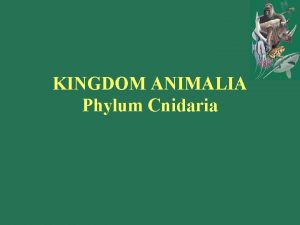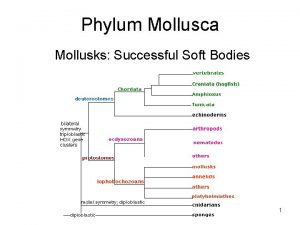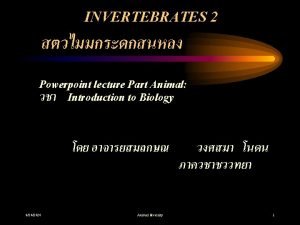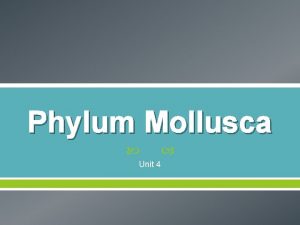Mollusks Kingdom Animalia Phylum Mollusca means soft What






















































- Slides: 54

Mollusks Kingdom Animalia, Phylum Mollusca (means “soft”)

What is a Mollusk? ● ● ● Soft body with internal or external shell Ex: snails, slugs, clams, squid, and octopi Trochophore larva

● Body plan: ● Foot – takes on many forms ● Mantle – covers the body & secretes shell ● Shell – (present in most) ● Visceral mass – internal organs

General Characteristics • Bilaterally symmetrical • Triploblastic

General Characteristics Con’t • Open circulatory system –Exception is cephalopods have closed circularoty system • Radula usually present (tongue) • Protostomes

Groups of Mollusks Three major classes of mollusks Gastropoda Bivalvia Cephalopoda


Gastropods • “Stomach Foot” • Snails, Slugs, Nudibranchs, Conchs, Whelks, etc. • 35, 000+ species

• Freshwater, Marine, or Terrestrial • Shell-less or single-shelled • Move by secreting mucous with cilia or use muscular foot

Snail

Slug

Nudibranchs (sea slugs) Check out the nudibranch gallery at nationalgeographic

Gastropod Anatomy

Torsion • “twisted” body – 180 degree rotation of visceral mass –Significance: allows the snail to retract it’s head into the shell first and it’s foot last.


Interesting Facts! • Land snails can lift ten times their own weight up a vertical surface (like a wall). • Largest Snail = Giant African Land Snail –Can weigh 2 pounds!

Defense from Predators • Shells! • But what about poor land slugs and nudibranchs? – Land slugs are usually nocturnal – Some nudibranchs prey on cnidarians and recycle their nematocysts – Some sea hares can squirt ink to hide themselves

Gastropod Feeding • Most are predators or scavengers • Radula: tongue-like organ that scrapes algae or other plant-like material

Radula

• Some predatory gastropods have radula modified to pierce prey

Gastropod Respiration • Gas exchange occurs in mantle cavity – gills or diffusion • Siphon- inhalent tube –Where water enters body

Gastropod Circulation Have open circulatory system Blood not contained w/in vessels; instead it washes over the body tissues Blood acts as a hydrostatic skeleton

Nervous System • Nerves concentrated into large ganglia • Most ganglia located in head region • Simple or complex eyes • Osphradia- chemoreceptors that help to detect prey

Excretion Nephridium- kidneys Ammonia = primary nitrogenous waste produced in aquatic species Uric acid = primary nitrogenous waste produced in terrestrial species

Reproduction Can be monoecious or dioecious Usually external fertilization where sperm and eggs released into water Some internal fertilization in snails

Snail Reproduction

Economic Importance • Delicious-Escargot • Intermediate host for different parasites • Snails and slugs can be serious agricultural pests

Class Bivalvia

General Characteristics • Includes clams, oysters, mussels, scallops • Two shells –Hence “Bi-valvia”

• 30, 000+ species • Marine and Freshwater • Mostly filter feeders

Interesting Facts! • Largest bivalve -734 pounds and 4 long • Ocean Quahog can live to be 220 years old!


Bivalve Respiration • Incurrent and Excurrent Siphons –Water enters and exits here • Gills greatly expanded and cilliated

Circulation • Open Circulatory System –Blood not contained w/in vessels –Blood “washes” over body tissues by action of the beating heart

Bivalve Feeding and Digestion • Filter feeders –Labial palps filter out food particles –Non-edible particles flushed out through the excurrent siphon

Nervous System Con’t • Most sensory organs are located in the margin of the mantle –Have ganglia –Statocysts and Chemoreceptors

Reproduction • Mostly Dioecious • Gonads located in visceral mass • External fertlization

Economic Importance • Mmm Tasty! • Pearl production –Multi-billion dollar industry

Class Cephalopod

Cephalopods octopi, squids, cuttlefish, and nautilus ● soft-bodied , head is attached to foot ● foot is divided into tentacles with sucking disks • Use jet propulsion ●

Cephalopod Shell • Nautilius only one with external shell • Internal in squid (pen) and cuttlefish (cuttlebone) • Absent in octopi


Movement • Use siphon for jet propulsion –Squeeze mantle cavity forcefully • Sometimes have external “wings” used to help steer


Feeding • Active predators –Many hunt at night • Food captured by tentacles and brought to mouth • Jaws and radula used

Respiration & Circulation • Closed circulatory system – 3 Hearts –Blood is contained w/in vessels • Respiration through gills • High metabolic rate

Nervous System • Very large brain • Advanced, large eyes • Chemoreceptors • Chromatophores-pigment cells • Some of the smartest animals on the planet

• Some display bioluminescence: use ATP to light up • squid: brown or black ink

Octopus (creeps on tentacles)


Squid

Reproduction • Dioecious • Males have testes and packed sperm in spermatophores • All larval development occurs in the egg

Economic Importance • Yummy food source- calamari • Bait

Octopus versus Shark
 What are chordata
What are chordata Entertoxemia
Entertoxemia Diptera
Diptera Kingdom animalia phylum arthropoda
Kingdom animalia phylum arthropoda Carybdea marsupialis
Carybdea marsupialis Kingdom animalia phylum chordata
Kingdom animalia phylum chordata Cnidaria characteristics
Cnidaria characteristics Animalia mollusca
Animalia mollusca Old kingdom middle kingdom new kingdom
Old kingdom middle kingdom new kingdom Old kingdom middle kingdom new kingdom
Old kingdom middle kingdom new kingdom Youtube
Youtube Capital of egypt during the old kingdom
Capital of egypt during the old kingdom Snail phylum
Snail phylum Classes in phylum mollusca
Classes in phylum mollusca Characteristics of phylum mollusca
Characteristics of phylum mollusca Phylum mollusca homework and study guide #1
Phylum mollusca homework and study guide #1 Phylum mollusca symmetry
Phylum mollusca symmetry Maluska
Maluska Gastropods characteristics
Gastropods characteristics Monoplacophora characteristics
Monoplacophora characteristics Three kinds of mollusks
Three kinds of mollusks Nine phyla of kingdom animalia
Nine phyla of kingdom animalia Kingdom animalia cell structure
Kingdom animalia cell structure Animalia characteristics
Animalia characteristics Cladogram of the 6 kingdoms
Cladogram of the 6 kingdoms General characteristics of cell
General characteristics of cell Kelas pisces
Kelas pisces Monera protista fungi plantae animalia
Monera protista fungi plantae animalia Is a frilled lizard unicellular or multicellular
Is a frilled lizard unicellular or multicellular Bab 8 animalia
Bab 8 animalia Which are all members of the domain eukarya
Which are all members of the domain eukarya Is animalia prokaryotic or eukaryotic
Is animalia prokaryotic or eukaryotic Animalia division
Animalia division Domain of animalia
Domain of animalia Animalia insects
Animalia insects Animalia kingdom
Animalia kingdom Kingdom animalia fish
Kingdom animalia fish Are fish in the kingdom animalia
Are fish in the kingdom animalia Kingdom animalia contains 350 000 species of what
Kingdom animalia contains 350 000 species of what Biology kingdom animalia
Biology kingdom animalia What is the classification of an axolotl
What is the classification of an axolotl Cladogram animal kingdom
Cladogram animal kingdom Manfaat calcarea
Manfaat calcarea Pisces
Pisces Class monogenea
Class monogenea Agnata
Agnata Characteristics of animals
Characteristics of animals Domain eukarya kingdom animalia
Domain eukarya kingdom animalia Coelom
Coelom Animalia kingdom chordates and vertebrates
Animalia kingdom chordates and vertebrates Finding order in diversity
Finding order in diversity Fasciola hepatica
Fasciola hepatica Grasshopper phylum and class
Grasshopper phylum and class Six animal kingdoms
Six animal kingdoms Taxonomy of cat
Taxonomy of cat
